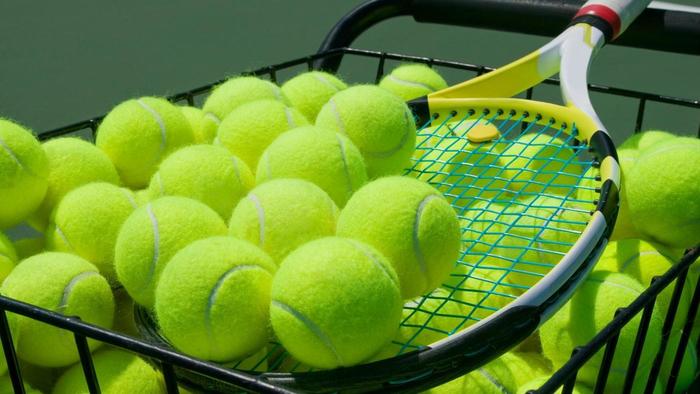How a tennis ball is made may be nothing short of mystery to many. The International Tennis Federation regulates the size, bounce and air content of the tennis balls and ball makers are required to follow the guidelines strictly. The process of making the ball is a careful one, since ball manufacturers that do not pass the test are delisted from the ITF’s approved list of tennis balls that are allowed for tournaments. This article shows how Tennis Ball is made.
Preparing the rubber ball
Natural rubber-based core compound is brought into the factory in large bales. The rubber core is placed on the open mill and crushed or kneaded like dough for five minutes to make it softer and easier to work with.
Cutting the rubber
The rubber is heated, extruded, and cut into barrel-shaped slugs or as ITF puts it, ‘squeezing toothpaste from a tube.' These slugs are what the half shell of the tennis balls becomes. They are then left to cool down.
Making the halves of the tennis ball
The slugs are made to pass through a machine, which compresses or molds them into the bowl shape. The edges of the halves are buffed and roughen by another machine to ensure that the glues fall in place and make the holds tighter. These two halves are pressurized to 18psi and placed in the top and bottom of the press. This press is closed to form the tennis ball.
Making the tennis ball
When the two halves of the ball are pressed together, they are heated for 5 minutes and then allowed to cool for three minutes. According to ITF, a ball should have a diameter higher than 2 ½ inches but less than 2 5/8 inches. Also, a ball, when dropped from 100 feet should bounce more than 53 inches and less than 58. The newly bonded halves are put in a cylindrical buffing machine lined with sandpaper; this machine roughens up the ball in preparation for adhesives application.
Applying tennis ball covers
After the ball is coated with adhesives,
the next stage is to have them covered. The covering (called felts) for the tennis ball usually comes in long sheets and are sent to a stamping machine which cuts out the desired shape. After cutting, the felts are stacked together, and glue is applied to its edges. The felts are applied by placing the naked tennis ball in the machines, after which the felt is mechanically wrapped around the core.
Final stage
The covered tennis balls are made to pass through heat again to seal up the glue. The finished balls are then tested rigorously to ensure they conform to ITF standards regarding bounce, size, and stiffness. When the balls pass the test, the company’s logo is stamped on it, and they are ready to be packaged and shipped.
There you have it; how tennis ball is made. Watch the video here.


